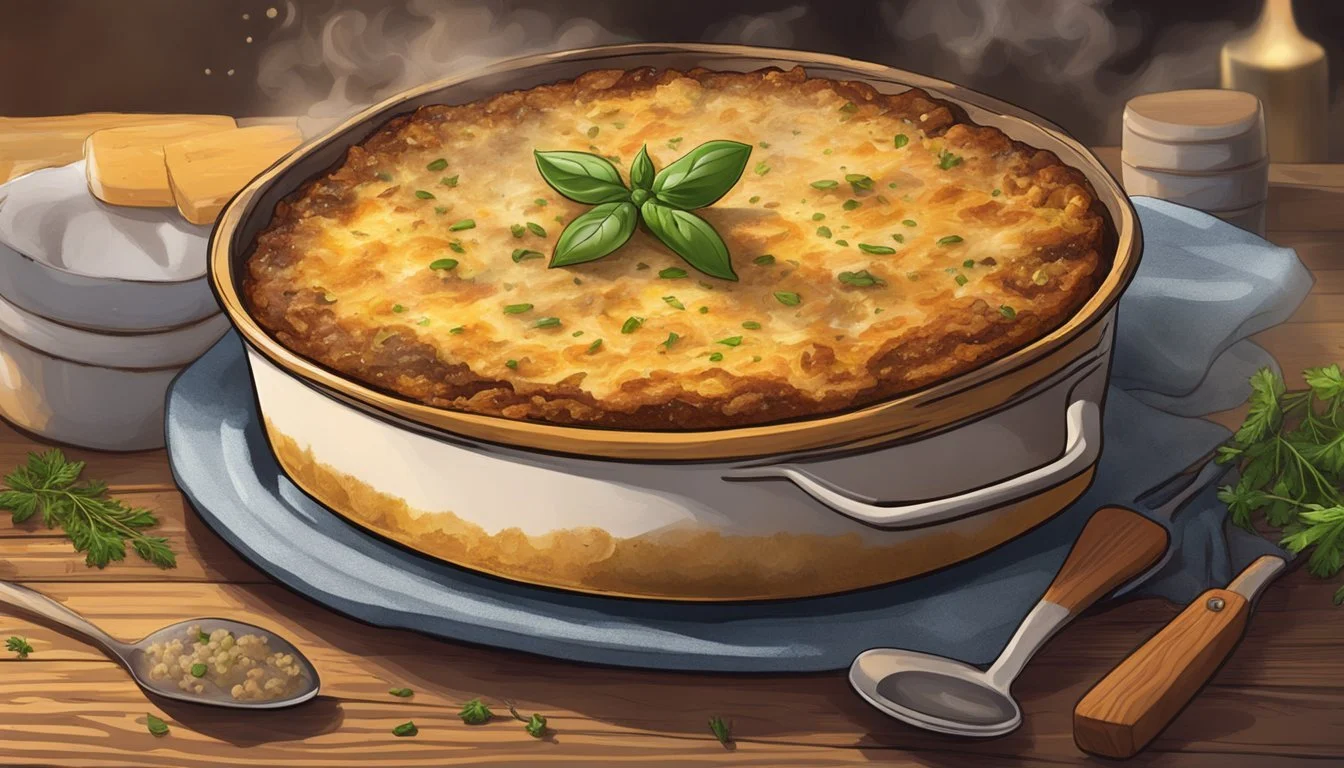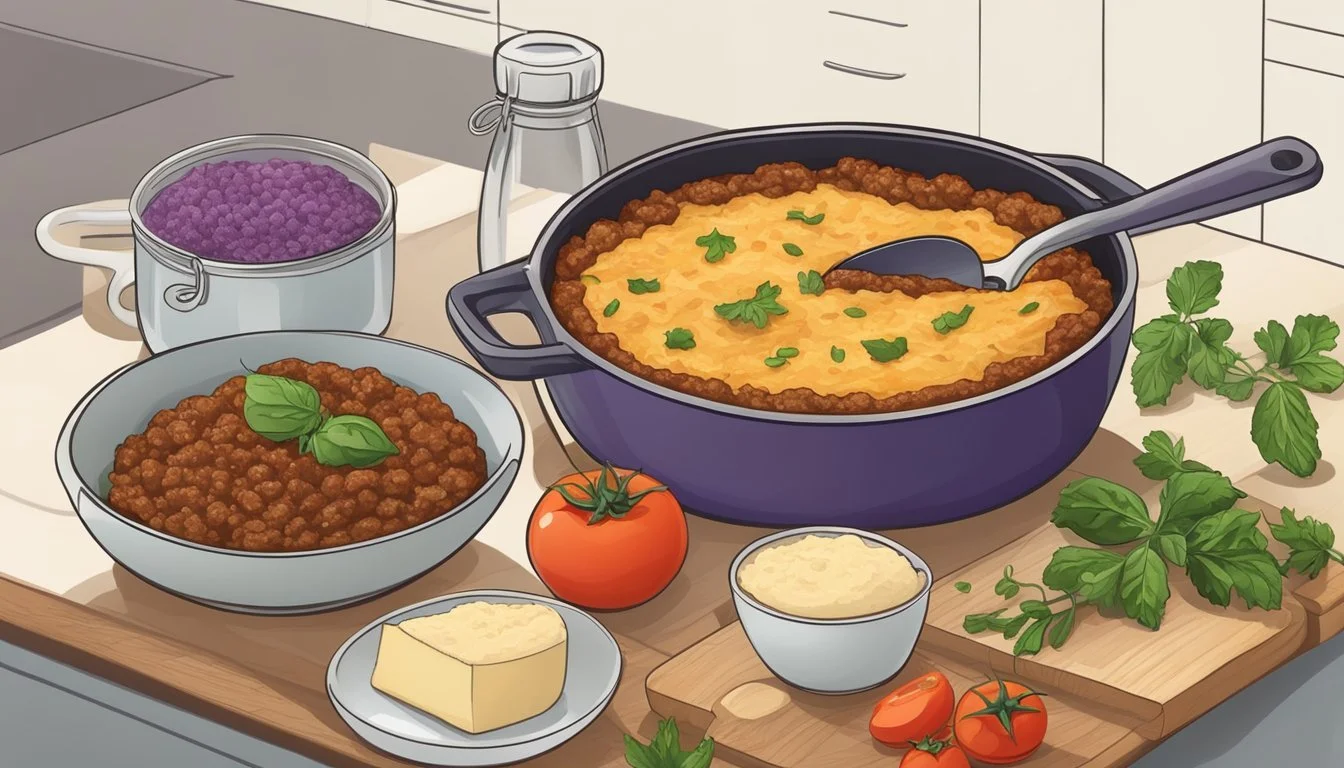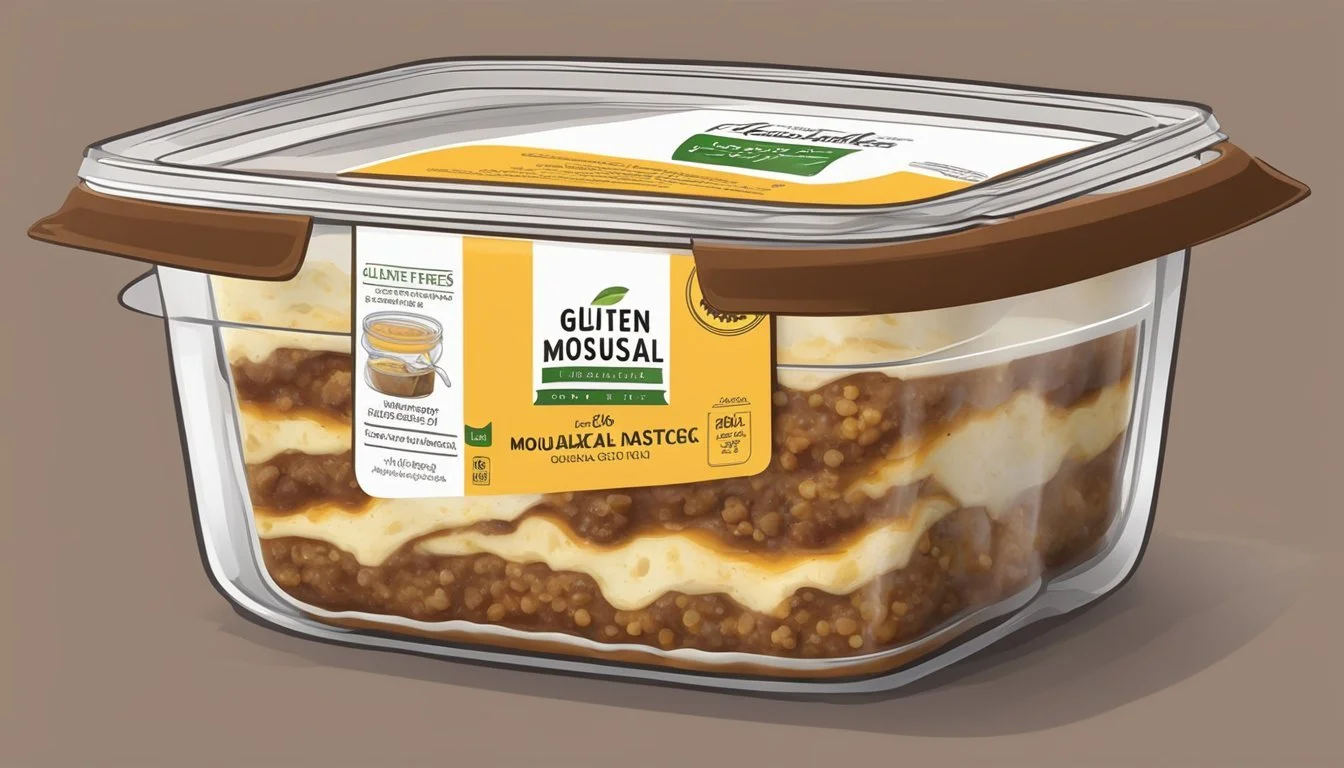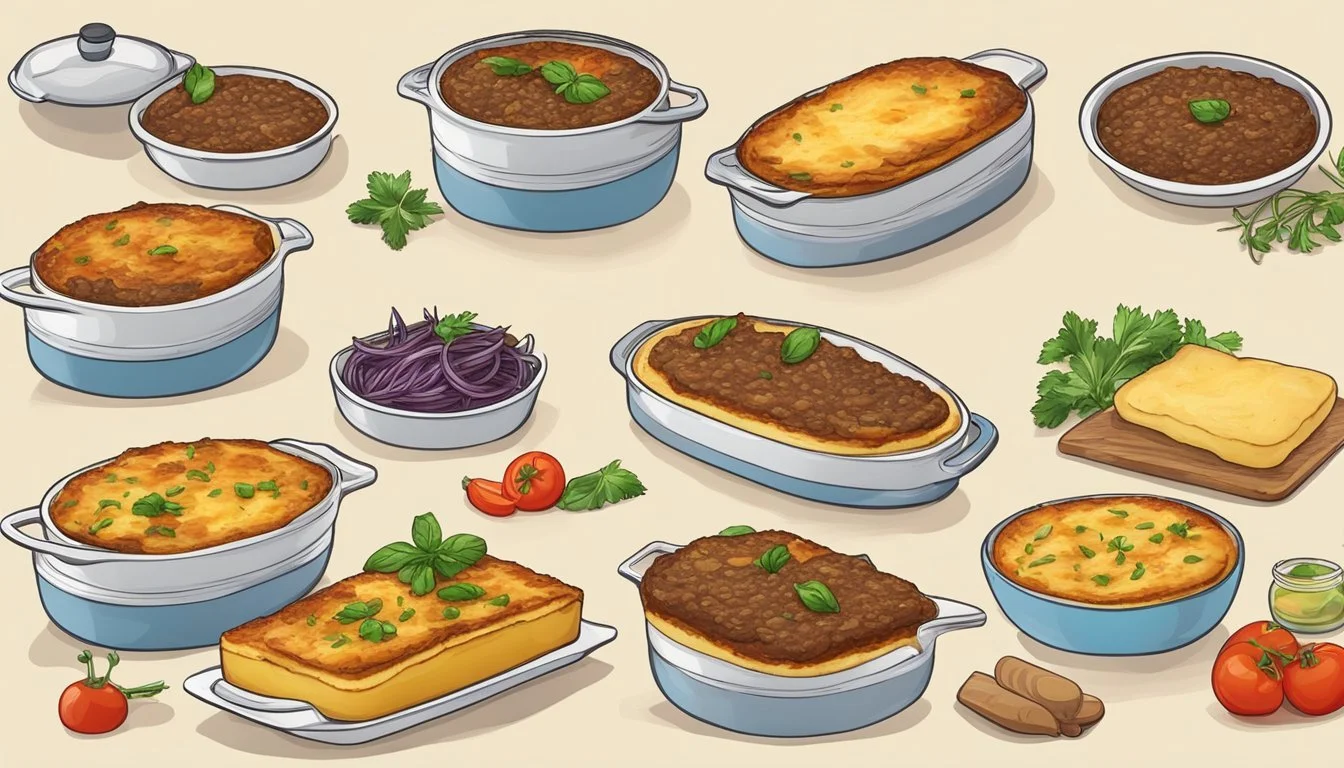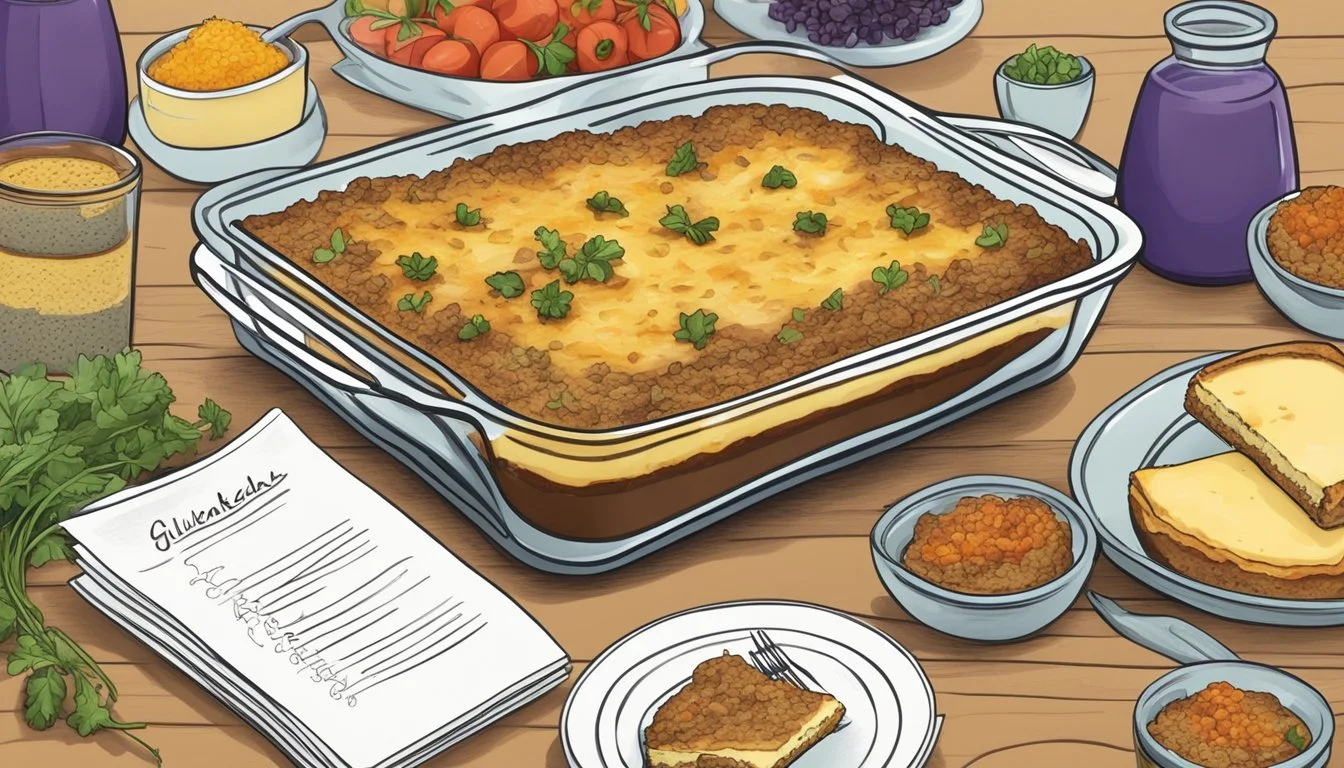How Long Does Gluten-Free Moussaka Last?
Shelf Life and Storage Tips
Gluten-free moussaka, a delightful and satisfying casserole, remains a timeless Greek dish loved by many. This traditional recipe, rich with layers of aubergine, lentils, or meat sauce, topped with a creamy bechamel, can be a mainstay in any household. When stored properly in the refrigerator, gluten-free moussaka can last for three to four days.
To maintain its freshness and flavor, it is crucial to store the moussaka in an airtight container. This helps to keep the different layers of the casserole intact and prevents it from absorbing other odors in the fridge. Ensuring the dish is cooled to room temperature before refrigerating also preserves its texture.
For those who prefer to make it in advance or have leftovers, it's helpful to know that gluten-free moussaka can also be frozen for up to two months. When reheating, it's recommended to let it thaw overnight in the fridge and then reheat it to the desired temperature, ensuring an even and delicious meal every time.
Understanding Gluten-Free Moussaka
Gluten-free moussaka is a variation of the classic Greek dish, made without gluten-containing ingredients. This dish is often enjoyed by those with gluten sensitivities or celiac disease.
Key ingredients in gluten-free moussaka include eggplants, potatoes, lentils, a tomato-based sauce, and a gluten-free béchamel sauce. The béchamel sauce can be prepared using gluten-free flour alternatives.
Eggplants and potatoes are essential components. They are typically sliced and roasted or fried before layering them in a baking dish.
A common method involves laying roasted eggplants, potatoes, and a rich lentil tomato stew in a baking dish, then topping it with béchamel sauce. For those who are dairy-free, alternatives for the béchamel and cheese can be used.
When assembling, start with a layer of potatoes, followed by eggplants, and then the lentil mixture, repeating these layers. The final top layer is usually the creamy béchamel sauce.
The dish is baked until the top is golden brown and the inside is heated through, generally at around 200°C (180°C fan). The flavors combine as they cook, making each bite a delicious blend of textures and tastes.
Ingredients and Substitutes
When preparing gluten-free moussaka, selecting the proper ingredients and identifying suitable substitutes is essential. The emphasis should be on maintaining the dish's traditional flavors while ensuring it remains gluten-free.
Key Ingredients
Olive Oil: Olive oil is a staple in moussaka recipes, used for sautéing vegetables and layering components. Its rich flavor enhances the dish overall.
Onion and Garlic: Onions and garlic are fundamental aromatics that form the base of most moussaka recipes. They add a deep, savory flavor.
Eggplant and Potatoes: These are the primary vegetables used in layers. Eggplant brings a rich texture, while potatoes add heartiness.
Lentils: For vegetarian versions, lentils are a great substitute for meat. They provide protein and a satisfying texture.
Tomato Sauce: A robust tomato sauce with herbs and spices is vital. It binds the layers together and provides moisture and flavor.
Béchamel Sauce: Traditionally made with wheat flour, this sauce needs a gluten-free adaptation but remains essential for the creamy top layer.
Gluten-Free Substitutes
Gluten-Free Flour: Replace traditional flour in the béchamel sauce with a blend of gluten-free flours like rice flour or a commercial gluten-free flour mix.
Plant-Based Milk: For those who are also dairy-free, plant-based milk such as almond or soy can be used in both the béchamel sauce and other cooking steps.
Dairy-Free Cheese: To keep the dish dairy-free, consider using vegan cheese alternatives. These can melt well and still provide that cheesy top layer.
Ground Meat Substitutes: If the recipe calls for beef or lamb, it can be made vegetarian by using lentils or meat substitutes such as ground soy or pea protein.
These adaptations ensure that the gluten-free moussaka not only meets dietary restrictions but also remains flavorful and authentic.
Preparation and Cooking Process
To prepare gluten-free moussaka, it is crucial to handle each step meticulously from assembling the ingredients to baking. Ensuring the layers are cooked perfectly and seasoned correctly contributes to the dish's rich and hearty flavor.
Assembling the Moussaka
Sauce Preparation: Begin by creating the meat sauce. Brown onion, garlic, and lamb mince in your chosen fat. Add carrot, celery, and chopped kale, followed by passata, stock, and a blend of spices such as oregano, cinnamon, nutmeg, and paprika. Let the mixture simmer until thickened.
Eggplant Preparation: Salt eggplant slices to remove excess moisture, then drizzle with olive oil and pan-fry or grill them until golden brown. This enhances their flavor and texture.
Layering: Arrange half of the eggplant slices at the bottom of a baking dish, spread half of the meat sauce, and then a layer of bechamel sauce. Repeat these layers, ensuring even distribution.
Baking Steps
Preheat Oven: Set the oven to 375°F (190°C) for even cooking.
Final Touches: Sprinkle the top with grated cheese and a light dash of rosemary for added aroma.
Bake: Place the assembled moussaka in the oven and bake for 30-45 minutes. This allows the layers to meld together and the top to brown nicely. If desired, switch to broil in the last few minutes to achieve a golden crust.
Rest Before Serving: Allow the dish to rest for a few minutes before cutting into servings. This helps firm up the layers and makes slicing easier.
Storage and Shelf-Life
Proper storage is crucial to ensure that gluten-free moussaka stays fresh and safe to eat. Whether you plan to keep it in the fridge or the freezer, the method you choose will significantly impact its shelf-life and quality.
Storing in the Fridge
Gluten-free moussaka should be stored in an airtight container in the fridge. This helps maintain its texture and flavor while preventing contamination. Make sure the moussaka has cooled completely before sealing to avoid condensation, which can lead to sogginess.
Typically, gluten-free moussaka can last up to 3-4 days in the fridge. Any longer and the quality starts to deteriorate, and the risk of bacteria growth increases. For optimum safety, consume within this timeframe.
Label the container with the date it was stored, ensuring you track the shelf-life accurately. If any part of the moussaka smells off or has an unusual texture, it is best to discard it to avoid any potential food safety issues.
Freezing Moussaka
Freezing is another excellent option for extending the shelf-life of gluten-free moussaka. Make sure to use freezer-safe containers or heavy-duty aluminum foil to prevent freezer burn. Similar to refrigeration, allow the moussaka to cool completely before wrapping.
When properly stored, gluten-free moussaka can last up to 2-3 months in the freezer. For the best quality, aim to consume it within this period.
To reheat, thaw it in the fridge overnight. Then, heat it in an oven preheated to 350°F (175°C) until it’s warmed through. Avoid microwaving, as this can lead to uneven heating and a soggy texture. Always check for any freezer burn, which appears as white or grayish spots, and discard any affected portions.
Reheating and Serving Suggestions
To ensure that gluten-free moussaka maintains its flavor and texture, proper reheating techniques are essential. Follow these tips to achieve the best results.
Proper Reheating Techniques
Oven: Preheat the oven to 350°F (177°C). For individual portions, place them on an oven-safe tray and heat for about 20 minutes. Larger portions may require closer to 30-40 minutes. Check periodically to avoid overcooking and drying out the dish.
Microwave: Place a serving of moussaka on a microwave-safe plate. Cover with a microwave-safe lid or plastic wrap. Heat on high for 2-3 minutes. Rotate the dish halfway to ensure even heating. If the middle is not hot, continue heating in 1-minute intervals.
Serving: Once reheated, garnish the moussaka with fresh herbs like parsley or basil for added flavor. Serve hot with a side salad and a glass of red wine. Ensure the dish is crispy on top and cheesy in the middle for the best experience.
Nutritional Information
Gluten-free moussaka is a nutritious option packed with wholesome ingredients. Here's a breakdown of its key nutritional components:
Calories
A typical serving of gluten-free moussaka contains around 350-450 calories. The exact number varies depending on the ingredients and portion size.
Protein
This dish offers a good amount of protein, primarily from meat or lentils (in vegetarian versions). Expect approximately 15-25 grams of protein per serving.
Fiber
With eggplants, potatoes, and sometimes lentils, gluten-free moussaka is rich in fiber. Each serving can provide 4-7 grams of dietary fiber.
Carbohydrates
Carbohydrate content varies but generally falls within 30-40 grams per serving, largely from vegetables and any béchamel sauce or layers added.
Healthy Fats
Using olive oil, healthy fats are present. Each serving contains around 15-20 grams of fat, emphasizing unsaturated fats.
Potassium
Eggplants and potatoes contribute significant potassium. One serving can offer up to 700-900 milligrams of potassium.
Calcium
Featuring cheese and béchamel, this dish offers calcium. Expect about 200-300 milligrams of calcium per serving.
Iron
Iron content depends on the ingredients. Generally, it provides around 2-4 milligrams of iron per serving.
Here's a summarized table:
Nutrient Amount per Serving Calories 350-450 kcal Protein 15-25 grams Fiber 4-7 grams Carbohydrates 30-40 grams Healthy Fats 15-20 grams Potassium 700-900 mg Calcium 200-300 mg Iron 2-4 mg
The nutritional profile may vary based on precise ingredients used. Always adjust according to dietary needs.
Variations of Moussaka
Moussaka, a beloved traditional dish, can be tailored to various dietary preferences and ingredient choices. These adaptations range from vegetarian and vegan options to those using different meats for the filling.
Vegetarian Alternatives
Vegetarian moussaka substitutes the meat with high-protein alternatives like lentils. Lentil-based moussaka offers a hearty texture and maintains the dish's richness. In some recipes, zucchini and potatoes are layered with roasted eggplants, then topped with a homemade tomato lentil sauce.
A vegetarian moussaka often uses a vegetarian béchamel sauce, which avoids meat stocks and incorporates alternative dairy products. This version maintains the traditional savory flavors and textures, making it a satisfying dish for those who avoid meat.
Vegan Moussaka
Vegan moussaka removes all animal products, using vegan bechamel sauce made from soy milk or other plant-based alternatives. Layers typically involve eggplants, zucchini, and potatoes, with a rich, lentil filling providing a hearty consistency.
The lentil-tomato sauce in vegan moussaka is flavorful, often including ingredients like onions, garlic, and a mix of spices and herbs. To achieve the creamy top layer without dairy, some recipes utilize nut-based cheeses or nutritional yeast for an equally rich and fulfilling taste.
Different Meat Choices
Traditional moussaka usually features lamb or beef as the filling. For those seeking variety, ground turkey or chicken can replace traditional meats, offering a leaner option. The use of pork also introduces a different flavor profile, enhancing the dish’s depth.
In these meat variations, the preparation of layers remains consistent – eggplants, sometimes with added vegetables like potatoes or zucchini, layered with meat sauce and topped with béchamel sauce. Adjusting the spices and herbs to complement the selected meat can offer new and enjoyable experiences.
Common Mistakes to Avoid
One common error when making gluten-free moussaka is overcooking the eggplant. Overcooked eggplant can become mushy, compromising the dish's texture. Slice the eggplant uniformly and monitor it carefully while frying or baking.
Underseasoning is another frequent mistake. It’s crucial to season all layers. This includes the meat mixture, the béchamel sauce, and the vegetables. Proper seasoning ensures a rich and flavorful moussaka.
Cross-contamination can occur if non-gluten-free utensils or surfaces are used. Separate cookware, cutting boards, and utensils should be dedicated to gluten-free cooking to avoid any gluten traces in the moussaka.
Avoiding these common mistakes helps achieve a delicious and safe gluten-free moussaka.
Additional Tips and Tricks
To ensure your gluten-free moussaka lasts as long as possible, proper storage is key. Store it in an airtight container in the refrigerator. Typically, it will last 3-4 days. For longer storage, freeze it for up to 3 months.
Cookware: Utilize a deep, oven-safe dish for even cooking and optimal layering. A 9x9 inch baking dish works well. Ensure it's well-greased to prevent sticking.
Seasoning: Use fresh herbs like oregano and thyme to enhance flavors. Salt and pepper each layer slightly to maintain seasoning consistency.
Consistency: Achieve a creamy consistency for the béchamel sauce by whisking continuously while adding milk. Avoid lumps by adding the milk gradually.
Layering Technique: Proper layering is crucial. Start with a layer of roasted vegetables, then add the lentil or meat mixture, followed by béchamel sauce. Repeat these layers, ending with a thick layer of béchamel on top.
Cooling Before Storage: Allow the moussaka to cool to room temperature before refrigerating or freezing. This prevents condensation and soggy layers.
For reheating, cover with aluminum foil to maintain moisture, and bake at 350°F (175°C) until heated through.
Reheating from Frozen: Thaw in the refrigerator overnight before reheating. For quicker reheating, you can microwave individual servings.
By following these tips, you can maximize the shelf life and quality of your gluten-free moussaka.

